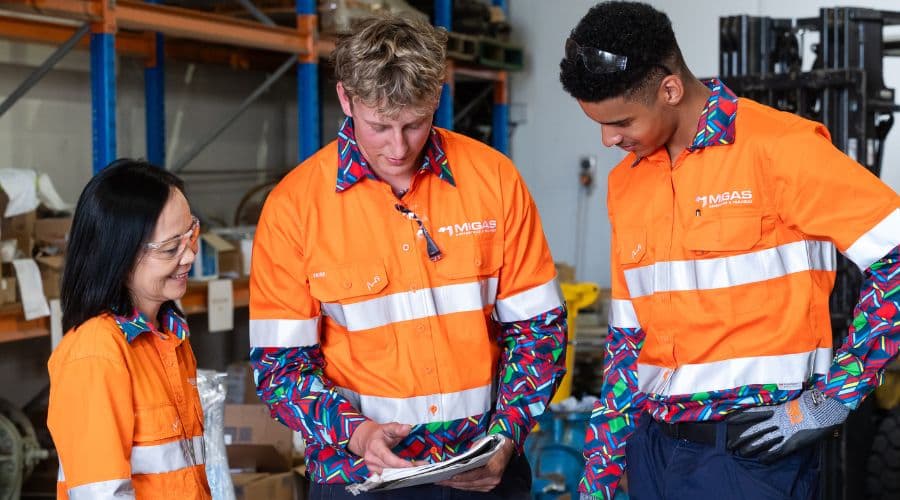How to Provide a Great Learning Environment for Apprentices

MIGAS Field Officer Linda with apprentices Connor and Sulayman.
Taking on an apprentice is an investment in developing skilled talent for your business.
The quality of the learning environment you provide will directly influence their performance, confidence and long-term commitment to your organisation.
Here are five practical ways that trades employers can create a positive and productive learning environment where apprentices can genuinely thrive.
1. Set Clear Expectations from Day One
Apprentices often enter the workforce with limited industry experience, so clarity makes a major difference from the start. Outline what a good workday looks like, explain how your team operates, and set expectations around punctuality, safety, attitude and communication.
This early structure helps apprentices feel confident and reduces the risk of mistakes caused by uncertainty or assumptions. A strong start creates the foundation for accountability and good habits.
2. Assign a Mentor, Not Just a Supervisor
Successful apprenticeships are supported by consistent guidance. Rather than moving an apprentice between whoever is available, assign one key mentor who takes responsibility for their learning, regularly checks in and offers real coaching instead of just instructions.
A strong mentor explains not only how to complete a task, but why it is done that way. That level of insight helps apprentices think like tradespeople rather than simply following steps.
3. Make Learning Intentional, Not Accidental
Apprentices learn best when their responsibilities grow over time. Avoid leaving them stuck on repetitive tasks for months. Gradually introduce new challenges when they are ready and explain how each task contributes to their progress.
Structured learning moments such as toolbox talks, demonstrations and hands-on practice reinforce development. When apprentices can see clear progress, they stay motivated and engaged.
4. Stay Involved with Their Off-The-Job Training
Apprentices are balancing TAFE or RTO studies with full-time work. Showing interest in their formal training signals that their development matters. Simple actions like checking on their progress, allowing time for assessments and reviewing competencies make a real difference.
When on-the-job experiences align with off-the-job learning, apprentices retain knowledge more effectively and perform more confidently.
5. Partner with a Group Training Organisation like MIGAS
Partnering with a Group Training Organisation such as MIGAS Apprentices & Trainees provides additional support that extends beyond the worksite. MIGAS recruits and employs the apprentice, manages payroll, and provides ongoing mentoring and pastoral care.
MIGAS also actively monitors training performance, progression milestones and wellbeing, ensuring any issues are addressed early. It is a smart option for employers who want apprentices in their workforce without managing every element of an Australian Apprenticeship internally.
Need Support Developing Apprentices the Right Way?
MIGAS has been supporting Australian employers and apprentices for over 35 years, helping build capable early-career trades talent through mentoring, training oversight and ongoing workforce support.
Learn more about partnering with MIGAS Apprentices & Trainees to support and grow your apprentice team, or contact us with your requirements.